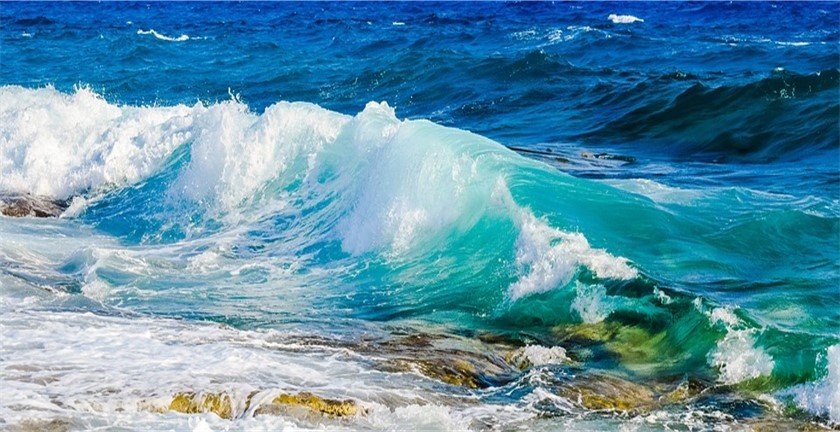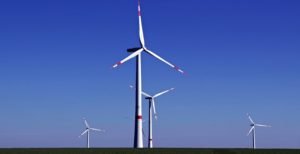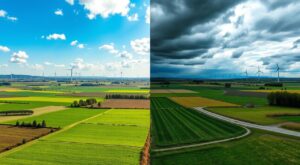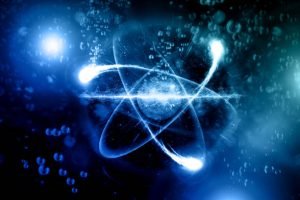Wave energy is one of the world’s abundant source of renewable energy. As the waves roll into the shore and back out again, they produce a lot of energy. Oceans cover about 70% of the earth surface and can produce a large amount of energy.
Energy produced through the waves from the oceans has various benefits and some drawbacks. Let’s take a look.
Pros:
1. Renewable energy: There will always be waves crashing on the shores of oceans or coastal regions thus, they will not run out.
2. Widely available: Major cities and harbors are located next to oceans and they can directly harness the power from the waves and use the energy in running machines.
3. Easily predictable: Wave energy is predictable and you can determine the amount of energy which can be produced. The energy is consistent and much better than other energy sources.
4. Environmentally friendly: Waves power has no harmful byproducts, unlike the fossil fuels which release greenhouse gases and other waste products. Wave’s energy can be used directly to power generators or other power plants nearby.
5. No land damage: There is no land clearing or digging is needed to extract energy. Wave energy is clean, safe and the most preferred method of extracting energy from the ocean.
6. Less dependency on foreign oil: Wave energy help reduce the dependency of fossil fuels. This helps reduce air pollution and also provides better green jobs to millions of people.
7. Reliable: Wave power is a reliable source of energy and the installed power plants do not need
manpower input to harness this type of energy.
8. Wave density: The power density of the waves is greater than that of wind energy and this makes waves energy to be more efficient.
9. Variety of ways to harness wave energy: Wave energy can be gathered in various ways. You can use installed power plants with hydro turbines or seafaring vessel to gather the wave energy.
10. Low operational cost: Once the power plants are installed, they have minimal operational costs making the investment attractive.
Cons:
1. Effects on marine ecosystem: Although it is clean energy, harnessing the energy puts danger to marine life. Big machines are put in water to gather the energy and these machines affect the seafloor and this may change habitats near sea shore like crabs or starfish and create noise to disturb them.
2. Wavelength: To gather a significant amount of wave power, there must be a consistent flow of powerful waves. Some areas have unreliable wave behavior and make wave energy unpredictable.
3. Weak performance in rough weather: During rough weather, the performance of the wave power drops. Waves cannot withstand rough weather.
4. Location: Wave energy only benefits power plants build in towns near the ocean. The source is not viable for everyone and only those near the ocean can directly benefit.
5. Noise and visual pollution: The power plants installed in the ocean to gather wave’s energy produce a lot of noise causing noise pollution to people leaving in the coastal area and also it disrupts the beauty of the ocean.
6. Disturbance to private and commercial vessels: Power plants for gathering wave energy are placed on the coastline and should be near town and a populated area for the energy to be used. This creates a disturbance to cargo ships and reduces recreational activities like fishing in the area.
7. Installation cost: The cost of installing large power plants in the ocean to gather energy is very high.
8. Breakdown of power plants: Strong ocean waves and storms leads to the breakdown of wave energy converters installed in the sea.
9. Electricity transmission: Wave energy plants are installed in coastal regions far from the grid and at the same time away from the need for electricity. This makes a connection to grid difficult and expensive.
10. Difficult to transmit wave energy: It is difficult to transport ocean wave-generated electricity to long distances for consumption.




The wave energy inertial hydraulic differential power generation device
The wave energy inertial hydraulic differential power generation device uses the inertial force of wave fluctuations to generate electricity. It’s a new marine energy generator. It is composed of a floating body and an inertial hydraulic differential power generation system.
When the floating body sways with the waves, the acceleration directions at both ends in the vertical direction are opposite.
The inertial hydraulic differential power generation system consists of at least two inertial force hydraulic transformers, pipeline generators, pipelines and check valves. The inertia force hydraulic transformer is located at both ends of the floating body.
When it is subjected to the inertia force, it pressurizes or depressurizes the liquid and pushes the liquid flow in the pipeline. The pipeline generator is installed on the pipeline to generate electricity.
The pipeline connects the inertia force hydraulic transformer, pipeline generator and check valve into a liquid circulation loop. The inertia force hydraulic transformer is composed of a shell, a liquid capsule and an inertia force pressure block.